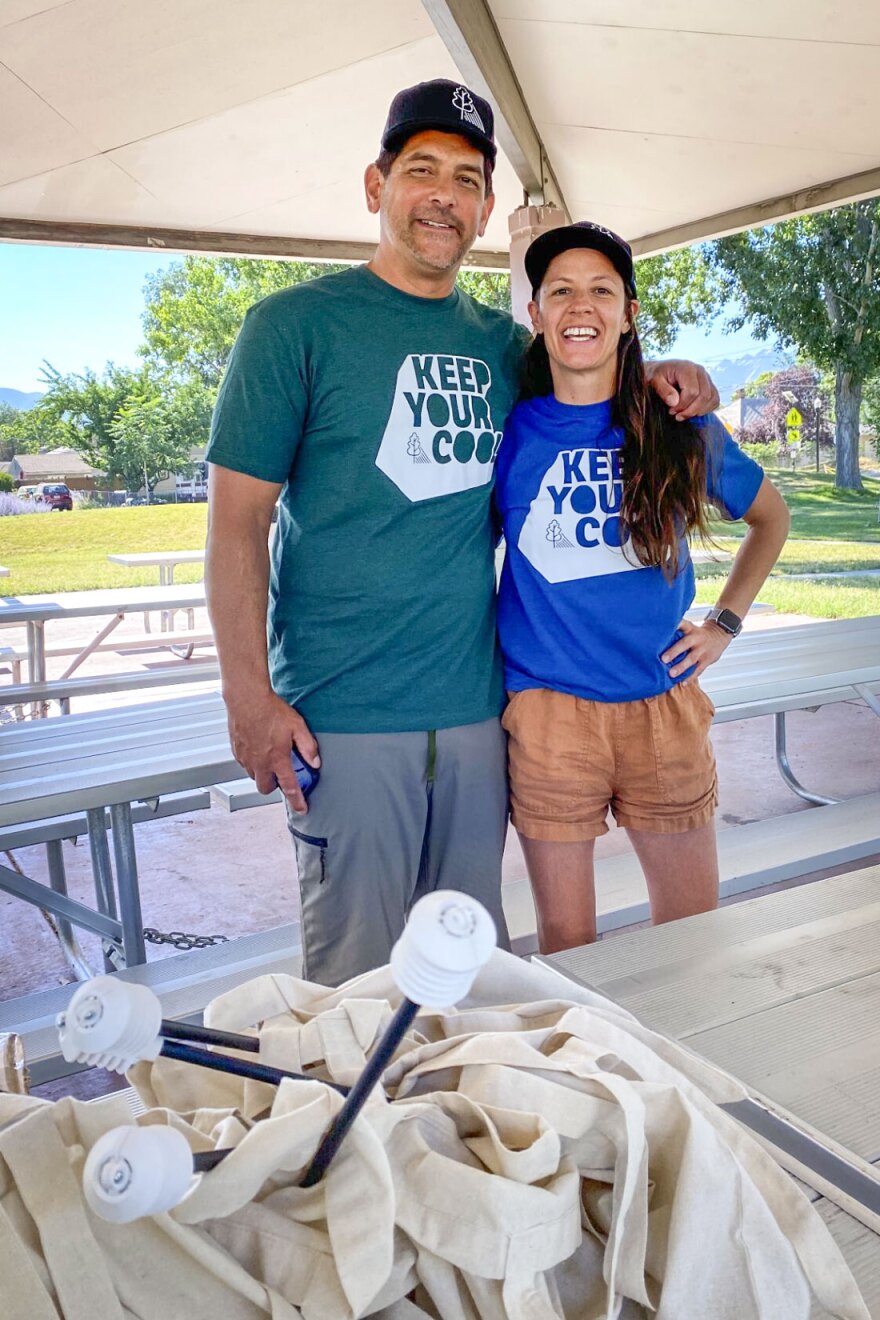While last weekend’s excessive heat warnings kept some Salt Lakers indoors, scientists saw it as an opportunity to map the city’s hottest neighborhoods.
On Saturday, as the temperature in Salt Lake City climbed close to 100 degrees, volunteers gathered at Poplar Grove Park to drive and map 10 different routes. Using special monitors attached to their cars, they recorded the heat and humidity of the routes as they traveled throughout the city.
Data on heat distribution across Salt Lake City doesn’t exist yet, said Wei Zhang, an assistant professor of climate science at Utah State University.
“Federal, state and city governments [should] understand that [heat] distribution and for the communities to be aware of the risk of extreme heat,” he said.
The National Oceanic and Atmospheric Administration selected Salt Lake City to receive scientific support for the project. Urban heat mapping projects across the United States are a part of the Biden administration’s Justice40 initiative.
Rowland Hall, a private school in Salt Lake City, is involved in the project. Robert Wilson, a high school biology teacher at Rowland and the project's volunteer coordinator said that mapping urban heat islands will help find which neighborhoods are exposed to more than their fair share of heat.
“It could be about identifying the neighborhoods in greatest need, the neighborhoods experiencing the worst of the heat wave because of the urban heat island effect, and then making sure that people in those neighborhoods have access to a cooling center and know about it,” he said.
Planting trees or creating more green space, such as the city’s Green Loop initiative and its recent “pop up” green space in downtown, can help cool off hot areas. Wilson said finding out how hot those corridors are now before a possible permanent park installation can show how big of a difference urban forestry can have on cooling cities.
Residents often take trees for granted, said Tony Gliot, director of Salt Lake City’s Division of Urban Forestry. Awareness of urban heat islands could change that.
“It's important that our residents recognize that the force that we have here, the comfort that we have in our shade, is a result of generations worth of people just like them choosing to water and care for trees,” he said.
“I can't imagine them [volunteers] not sharing their experience with others and spreading the word that absolutely our urban neighborhoods are impacted by the urban heat island,” Gliot added.

Volunteers Roxanne Christensen and Chris Knoles — who both work in urban design and construction — collected data on a route through the Rose Park and Fairpark neighborhoods on the north side.
Christensen had heard of urban heat islands before and was curious if the benefits of shaded public parks were available to everyone.
Both said it should be a responsibility of developers and builders to include tree canopies in their plans so people have places to cool off.
“Whether it's responsibility that we push on the developers or the city saying, ‘look, if we're going to zone this for high density multifamily, we should increase more pocket parks in the region, or at least have another park similar to this that people can walk to from their apartment building’,” Knoles said
“If we just build a building, but we don't try and mitigate that with trees in the natural spaces, we're just adding to the heat gain,” Christensen said. “I just think that's a responsibility we should have for builders and developers.”
The volunteers lucked out on Saturday. On Sunday, July 16, the city hit a new record high for the date — 106 degrees. The previous record was 103 degrees, reached three times in 1960, 2005 and 2010.





